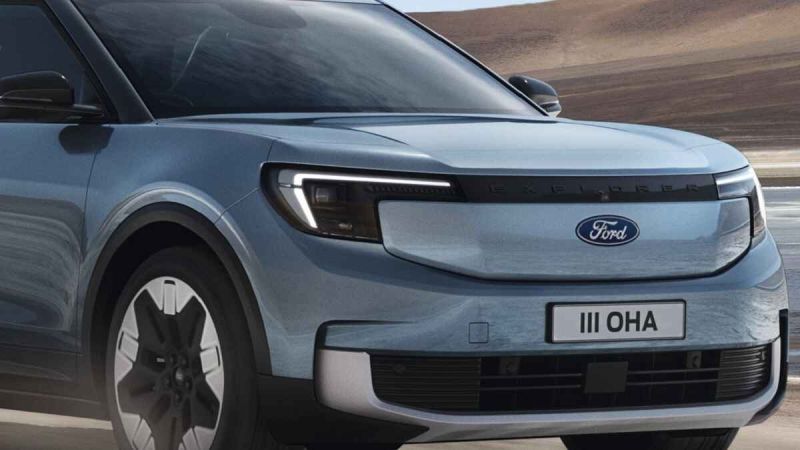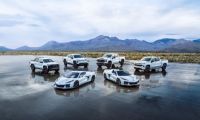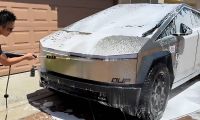Ford Motor Company is investing $1.8 billion (Canadian) in its Oakville Assembly Complex to transform it into a high-volume hub of electric vehicle manufacturing in Canada – a key part of the company’s plan to scale the production of electric vehicles and make them more accessible to millions of customers.
A First For North American Market
The campus, to be renamed Oakville Electric Vehicle Complex, will begin to retool and modernize in the second quarter of 2024 to prepare to produce next-generation EVs. This marks the first time a full-line automaker has announced plans to produce passenger EVs in Canada for the North American market.
Jim Farley, Ford’s president and CEO said, “Canada and the Oakville complex will play a vital role in our Ford+ transformation. It will be a modern, super-efficient, vertically integrated battery and vehicle assembly site. I’m most excited for the world to see the incredible next-generation electric and fully digitally connected vehicles produced in Oakville.”
The investment allows Ford to repurpose and transform existing buildings into a state-of-the-art facility that leverages Ford of Canada’s skilled and experienced workforce. Ford is taking a diverse strategic approach to transforming its industrial system to expand EV production: building new greenfield sites and transforming existing manufacturing sites like Oakville and Cologne, Germany.
“Ford’s commitment to invest in OAC retooling and upskilling signals a bright future for Canadian EV production and auto sector employment,” said Unifor National President Lana Payne. “The transformation of the Oakville plant is an important step towards a stronger industry and a testament to the hard work, skills, and dedication of our Unifor Oakville Assembly Complex members.”
Ford of Canada Is Leader In Canadian Auto Industry
“Ford of Canada has been a leader in the country’s auto industry since it was founded 119 years ago, driven by hard-working, dedicated employees,” said Bev Goodman, president, and CEO, of Ford of Canada. “As the top-selling auto brand in Canada for 14 straight years, the successful transition to EV production in Oakville will help deliver stable Canadian employment with the opportunity to build the new skills and expertise to drive Ford and the industry forward.”
The current 487-acre Oakville site includes three body shops, one paint building, and one assembly building. The transformed campus will feature a new 407,000-square-foot on-site battery plant that will utilize cells and arrays from BlueOval SK Battery Park in Kentucky. Oakville workers will take these components and assemble battery packs that will then be installed in vehicles assembled on-site.
Words Of Support From Canada
“Ford’s transformation from gas to electric vehicles is well underway. Once complete, the Oakville Electric Vehicle Complex will secure thousands of well-paying jobs for our hard-working Canadian autoworkers and boost the competitiveness of Canada's auto sector. The partnership between Ford and Canada helps to position us as a global leader in the EV supply chain for decades to come,” said François-Philippe Champagne, Minister of Innovation, Science and Economic Development of Canada.
In addition to the Oakville Electric Vehicle Complex upgrades, Ford also has announced:
- It is creating an all-new EV manufacturing ecosystem in West Tennessee – called BlueOval City – the home of a battery plant and the future home of Ford's EV production.Together with two battery plants in Kentucky, part of a joint venture with SK On, these sites will create 11,000 new U.S. jobs and are expected to begin production in 2025.
- Through a wholly owned subsidiary, Ford plans a battery plant in Marshall, Mich. Production is slated to begin in 2026, with 2,500 employees. Ford is the first automaker to commit to building lithium iron phosphate and nickel cobalt manganese batteries in the U.S., helping America’s No. 2 EV company 2022 diversify its U.S. supply chain.
- It is modernizing its vehicle assembly campus in Cologne, Germany, transforming it into the Ford Cologne Electrification Center – the company’s first EV center of excellence in Europe. This site will be home of European production of the new Explorer.
- Ford, LG Energy Solution, and Koç Holding have signed a non-binding memorandum of understanding to the European region's largest commercial electric vehicle battery cell production facilities. Later this year, the project is on track to break ground near Ankara, Turkey, with production to start in 2026.
- Ford this year is expanding production of the F-150 Lightning at the Rouge Electric Vehicle Center in Dearborn and the Mustang Mach-E at its Cuautitlan facility in Mexico.
Oakville Retooling To Bring Ontario World-Class Facility
"Ford’s investment in retooling its Oakville plant will support thousands of good paying jobs and is an important milestone in our plan to become a leader in the electric vehicle revolution,” said Ontario Premier Doug Ford. “Together, with our industry and union partners, we’re building up a world-class, homegrown electric vehicle supply chain, from mining to manufacturing, so that the vehicles of the future are built right here in Ontario-by-Ontario workers.”
Added Vic Fedeli, Ontario’s Minister of Economic Development, Job Creation and Trade: “Ford’s investment to transform its Oakville facility to manufacture passenger electric vehicles will strengthen our end-to-end EV supply chain and help ensure that the vehicles of the future are built here in Ontario. With our plan to build a strong Ontario, we continue to create the right conditions for businesses and workers to succeed now and for generations to come.”
Marc Stern has been an automotive writer since 1971 when an otherwise normal news editor said, “You're our new car editor," and dumped about 27 pounds of auto stuff on my desk. I was in heaven as I have been a gearhead from my early days. As a teen, I spent many misspent hours hanging out at gas stations (a big thing in my youth) and working on cars. From there on, it was a straight line to my first column for the paper "You Auto Know," an enterprise I handled faithfully for 32 years. Only a few people know that I also handled computer documentation for most of my earnings while writing YAN. My best writing, though, was always in cars. My work has appeared in Popular Mechanics, Mechanix Illustrated, AutoWeek, SuperStock, Trailer Life, Old Cars Weekly, Special Interest Autos, etc. You can follow me on: Twitter or Facebook.












